Featured
- Get link
- X
- Other Apps
Royal Style Unveiled: Tales from Kensington Palace's Exclusive Exhibition
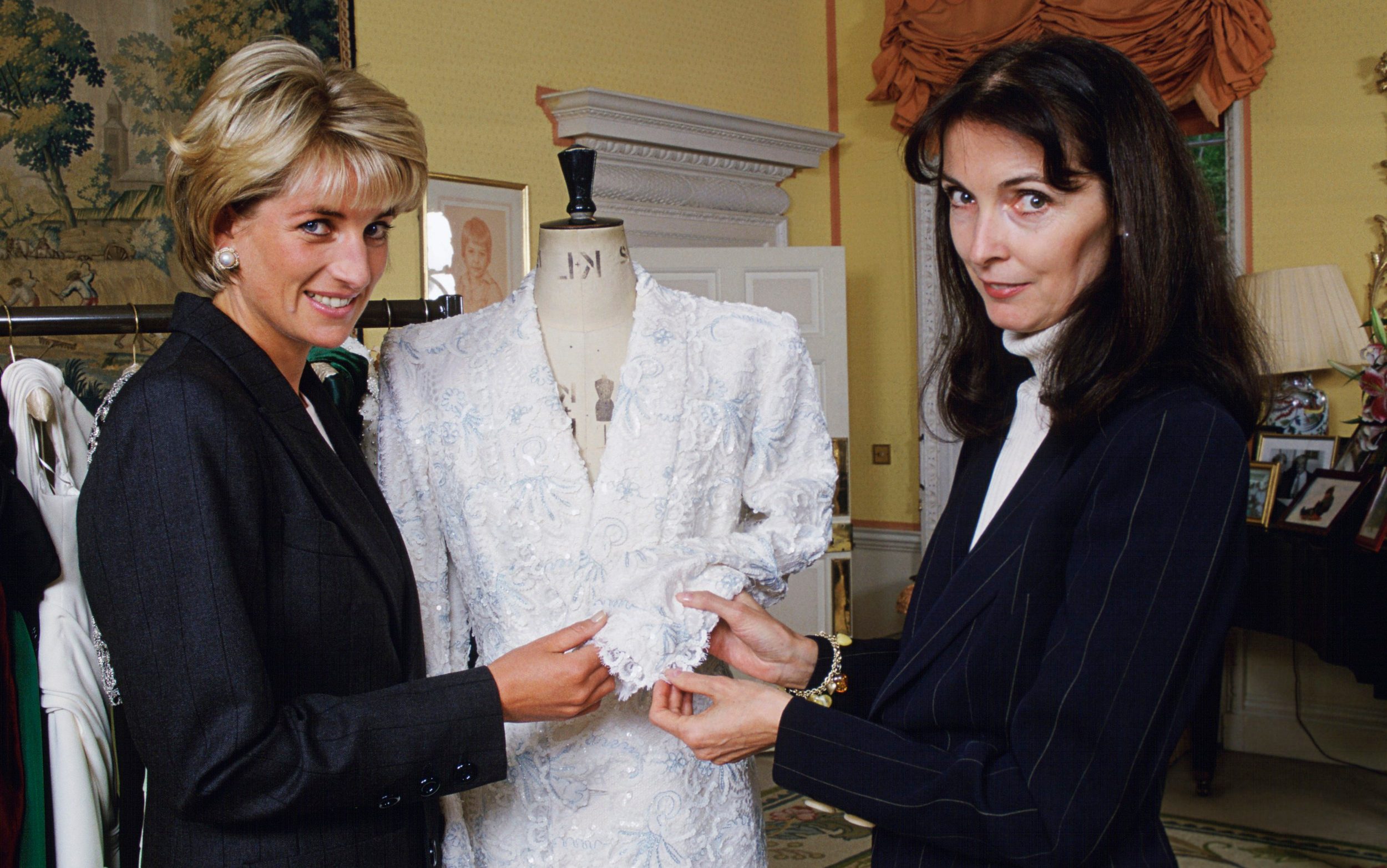
No blacks, no exposed shoulders, and absolutely no torn denim ever. Have you ever pondered how royalty balances the line between propriety and contemporary style with their clothing selections? Everything will be uncovered shortly. A new exhibit will debut this Thursday at Kensington Palace. , which will feature items owned by the late Queen Elizabeth II , Princess Margaret and Diana, Princess of Wales.
Titled 'Dress Codes,' this exhibition will showcase both iconic and previously unseen items from the annals of royal fashion. It delves into the etiquettes and choices behind these garments, highlighting instances where norms were challenged and traditions transformed. The individuals responsible for dressing royalty often develop close relationships as confidants due to their role in adhering to the strict protocols observed. delicate signals that are conveyed — consider Diana’s connection with the former Catherine Walker Bruce Oldfield who has since dressed Queen Camilla.
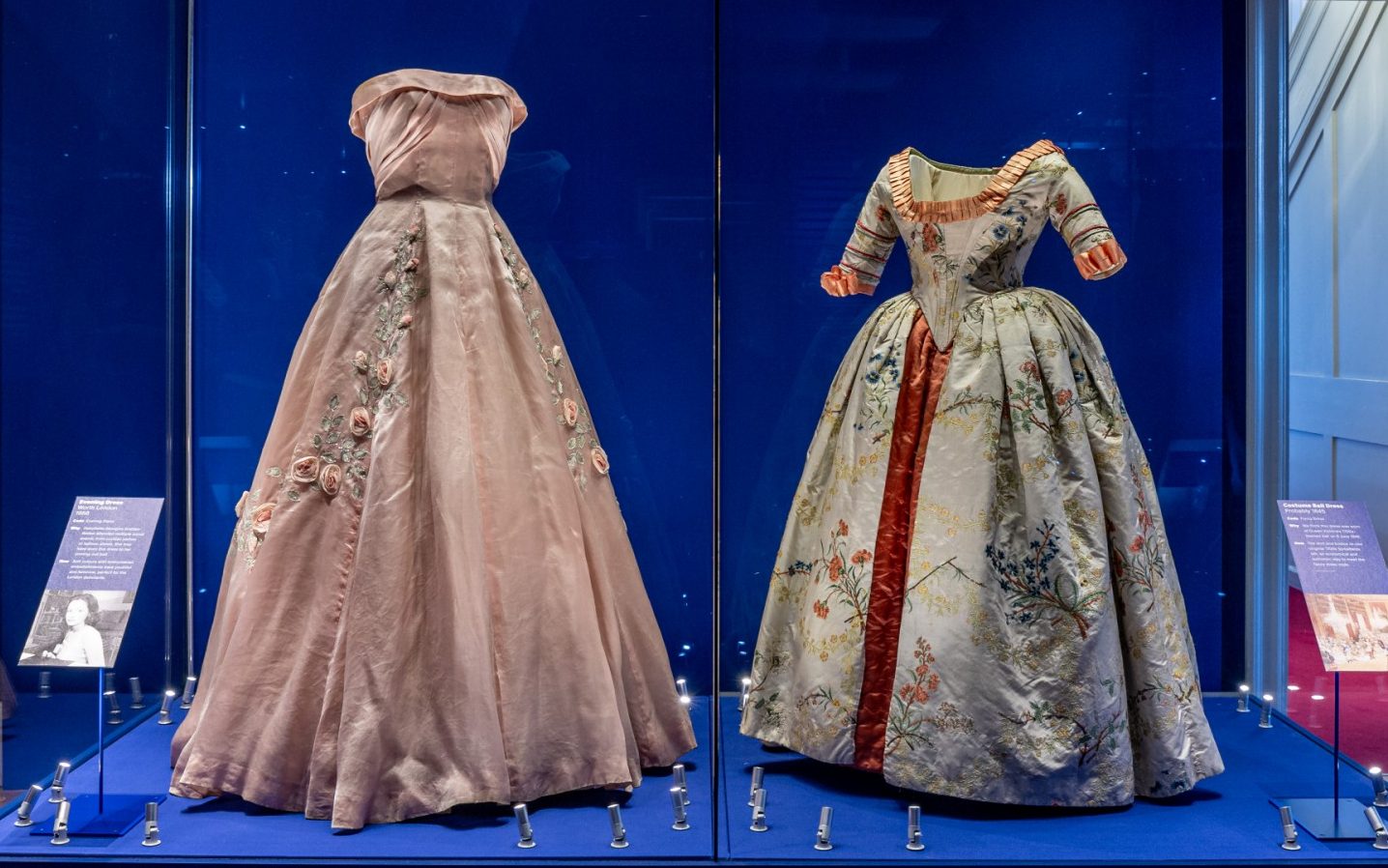
“It doesn’t matter how far back in history you go, the Royal family has always thought very carefully about their clothes,” says Matthew Storey, the exhibition’s curator. “From the 18th century, for example, you had royals making sure to wear British-made clothes, with that famous example of Queen Victoria choosing Honiton lace for her wedding dress, which revived that industry. We’ve got a really long tradition of royalty thinking about what message they are sending out with their clothing – both in its style and where it comes from. And it’s also become important for a sense of continuity between reigns, which is why they wear so many of the same things for Coronations and the like.”
These are the six items we're most looking forward to seeing.
Diana, Princess of Wales’s Catherine Walker green velvet tuxedo dress, 1992
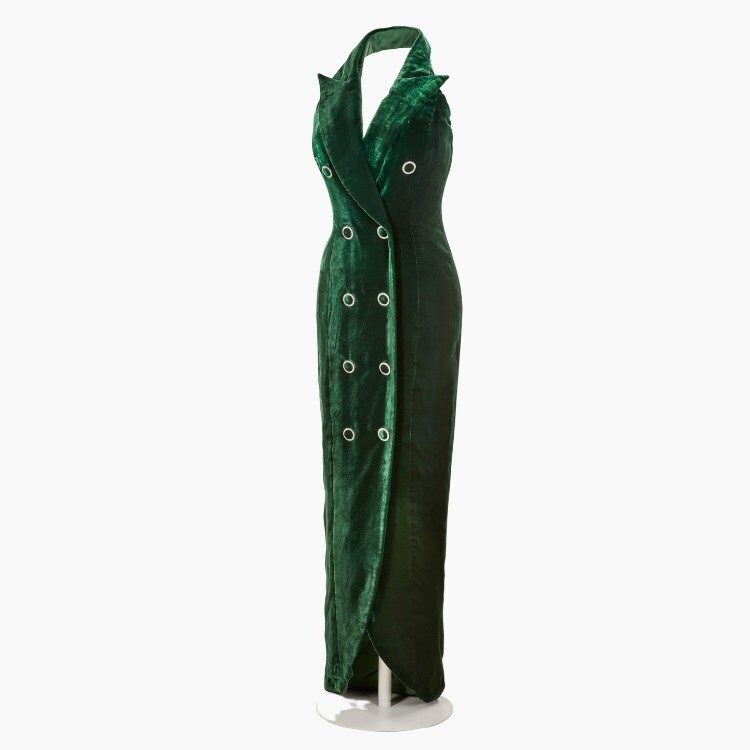
In Diana, Princess of Wales’s final years – when she had separated from the then-Prince Charles and lost her HRH – she was able to be a little more daring with fashion. Case in point is this very-modern green velvet tuxedo halter-neck dress from Catherine Walker, which she first acquired in 1992 but then wore to be photographed by Mario Testino in Vanity Fair in 1997. Despite being a formal piece thanks to the tuxedo style, it also shows off a fair amount of skin on her shoulders and back, which would have been a little risqué for a royal then (and perhaps even now).
“What’s interesting about Diana is that she was often pushing boundaries creatively, but she understood dressing for the occasion,” explains Storey. “When she was in private, she was able to really experiment with her style. This dress is a great example of that, because she wore it to a number of private formal occasions, before that Mario Testino photoshoot. I love the way it combines two types of evening wear, a full-length gown and a tuxedo. It’s bold and creative.”
Princess Margaret’s Thea Porter evening ensemble, 1978
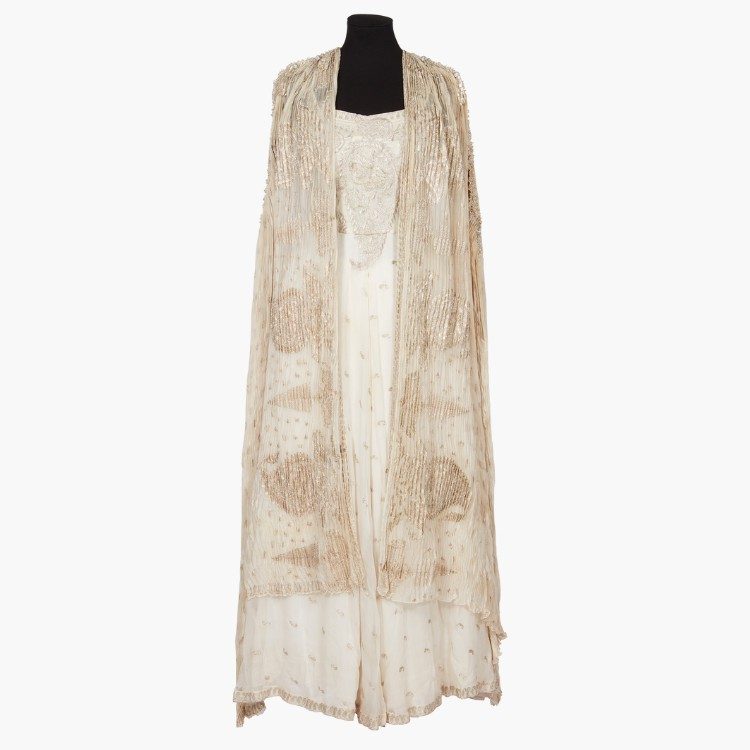
As the late Queen Elizabeth II’s younger sister, Princess Margaret was better able to dress for herself – especially in 1978, when her place in the line of succession had dropped to sixth. This meant that Margaret and her dressers were able to go to non-traditional dressmakers and tap into the trends of the day – such as this Thea Porter evening ensemble consisting of an ivory chiffon evening gown with paisley motif beading and accompanying beaded cape.
Starting from her 21st birthday, when she adorned a gown by Dior, Princess Margaret frequently selected outfits from an array of designers broader than those chosen by her sister, the Queen. This included renowned international fashion creators," clarifies Storey. "When she opted for designs by Thea Porter, she was aligning herself closely with the vibrant London scene. As Porter also clothed icons like the Beatles, Pink Floyd, and Barbra Streisand, this association linked her to these artistic figures.
Queen Victoria's dark mourning garment
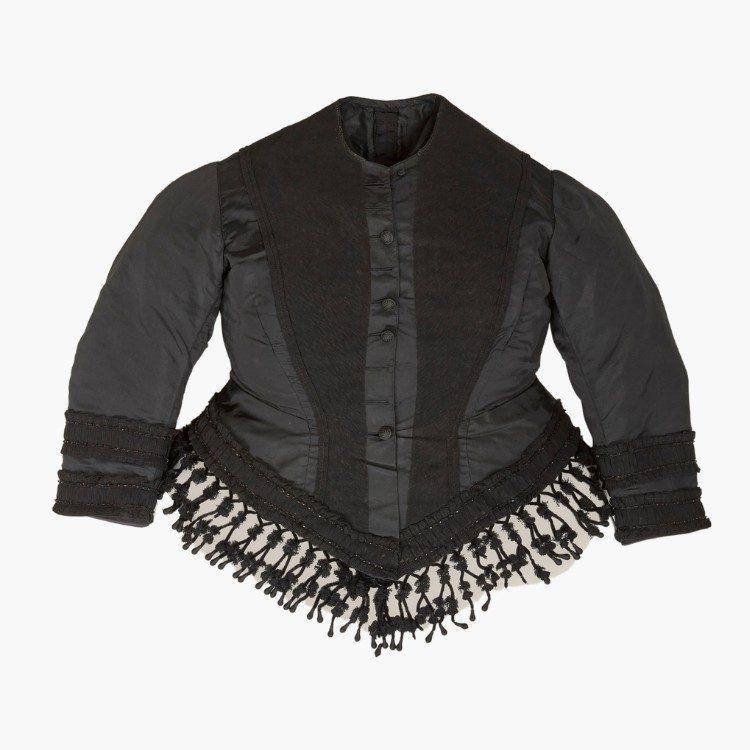
Queen Victoria's stringent observance of societal norms—including sartorial conventions—has come to epitomize the standards of her times. However, one aspect where she exhibited emotional openness was during her prolonged period of bereavement following the demise of Prince Albert in 1861, lasting all the way up to her own passing in 1901. Consistent with contemporary customs, she chose to wear solely dark garments; however, she pushed these limits further than most.
This is my favorite item in the exhibit," says Storey. "There isn’t much left from her wardrobe during the initial years of her bereavement, yet this garment illustrates how quickly she embraced this particular style which later came to be strongly associated with both her persona and sorrow. This attire defines her public image as a widow clad entirely in black alongside her distinctive white widow’s cap; it's what immediately comes to mind whenever one thinks about Queen Victoria. She wore such an outfit not only into her fifties but also through her seventies. This underscores the enduring impact and effectiveness of that iconic representation.
The Duke of Windsor’s checkered suit
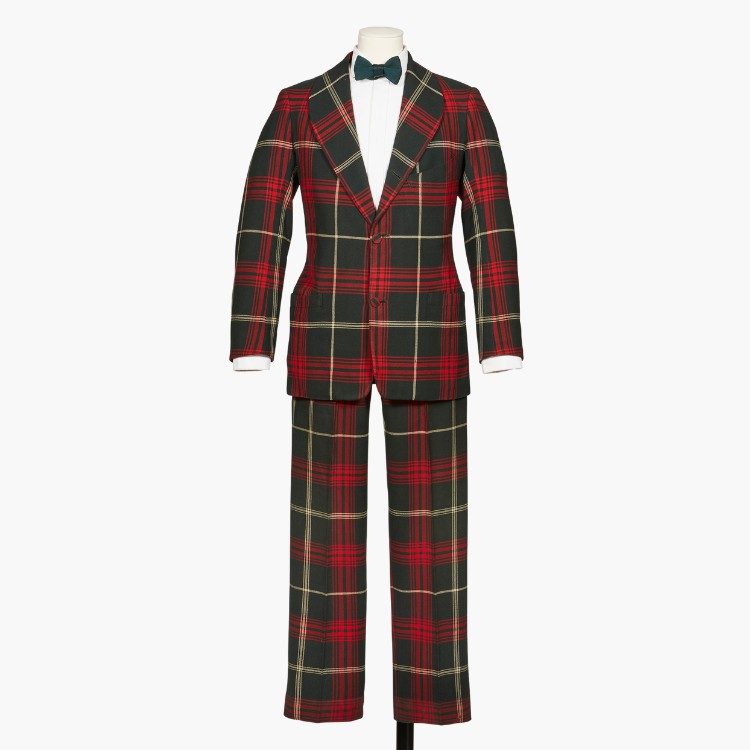
Princess Anne isn't the first member of royalty to adopt a "make do and mend" attitude towards clothing. Her great-uncle, the Duke of Windsor, was similarly inclined toward modifying and reconstructing his custom-made suits to extend their lifespan. For instance, an exhibit features what's called the 1897 Rothesay Tartan Suit, which he acquired from his father, King George V, and then personalized himself.
It's intriguing because the Duke of Windsor and his father did not exactly agree when it came to their clothing choices," chuckles Storey. "However, there seemed to be an appeal about this particular suit for the Duke—likely due to its luxurious, colorful tartan pattern. The duke included a fly zipper at the bottom, which was quite innovative during the 1930s, and he altered the lapel design, making them form a deep 'V' shape with only two buttons rather than three—the remnants of the extra buttonhole can still be seen today. This reflects his distinctly British philosophy of purchasing high-quality garments meant to last a lifetime through proper care. Additionally, he championed a less formal style of men's fashion, moving away from the rigid, traditionalist attitudes characteristic of the Edwardian era.
Queen Alexandra's lavender and white mourning dress from 1911
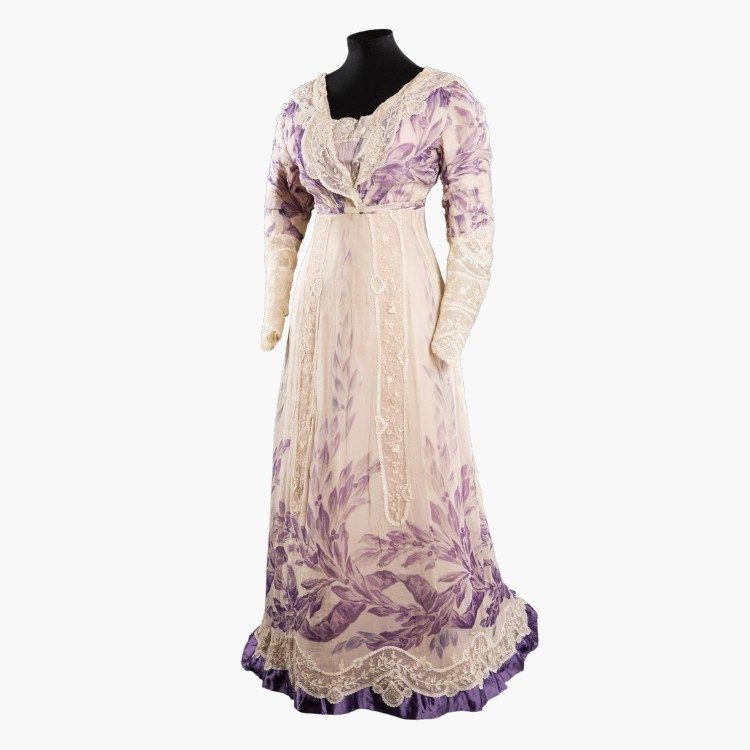
Often compared to the modern-day Princess of Wales, Queen Alexandra was known for being supremely stylish. When her eldest son, Prince Albert Victor, died in 1892 at age 28, it was a terrible shock to the family – and a potential dynastic issue as he was the heir to the throne. Understandably, the Queen was thrown into a deep mourning. By 1911, when she was pictured wearing this white and mauve gown to Ascot, her husband King Edward VII had died too.
Queen Alexandra was a trendsetter, and her approach to fashion was quite astute," explains Storey. "Without prior knowledge, one might assume this is simply an elegant summer gown. Today, we often link black with mourning; however, during her era, shades like white and mauve were commonly used for such occasions as well—specifically 'half-mourning,' worn some time after the loss occurred. After her son’s passing in 1892, she adopted these more restrained hues as part of her personal aesthetic. Additionally, the design elements of this garment reflect contemporary trends—the elevated waistline paired with flowing fabrics were highly sought-after styles throughout the 1910s.
Diana, Princess of Wales’s Bruce Oldfield red gown, 1987
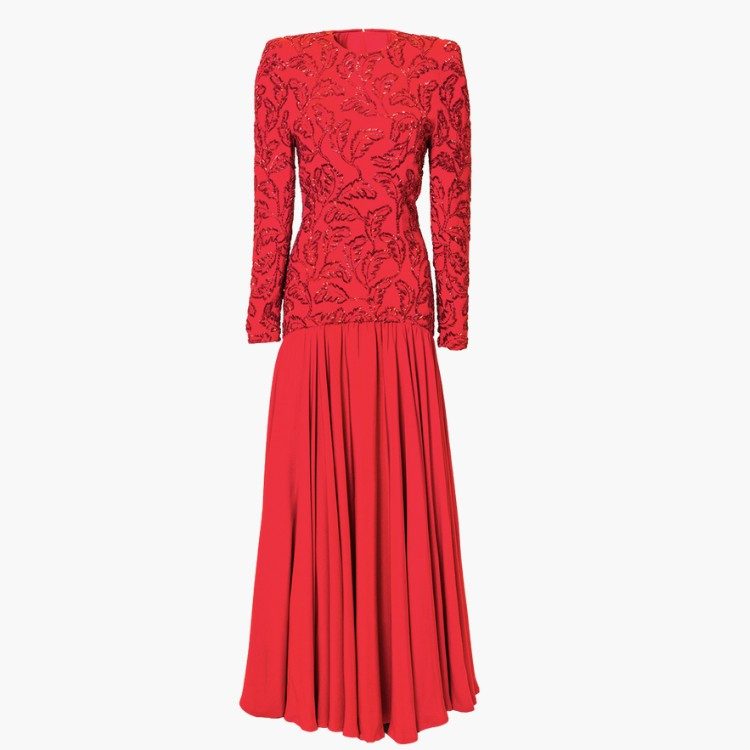
State visits often require what we today call, “diplomatic dressing”, that is a subtle show that the wearer understands the country that they are visiting and its specific history and culture. Often times, this means wearing a colour palette that nods to a country’s flag, or perhaps a brooch that is a specific symbol associated with that place. But it also means showing respect for that region’s own etiquette, such as covering the shoulders or the legs.
When Diana, Princess of Wales visited Saudi Arabia in 1987, her choice of this full-length, high-neck, long-sleeved gown by Bruce Oldfield would have been no accident, showcasing a modest approach to dressing that would have been appropriate for the occasion. At the same time, it also shows her flying the flag for British fashion too.
“We don’t actually have a photograph of Diana wearing this dress, because it was probably worn for a private event during the Saudi Arabia tour, which is rare enough in itself,” explains Storey. “I wanted to include it because it epitomises so much of 1980s fashion , with the drop waist and padded shoulders. There’s no doubt that when Oldfield was making this dress for Diana, he would have been considering the occasion, which you can see with the high neck, long full skirt and embellishment and beading on the bodice.”
‘Dress Codes’ opens at Kensington Palace on 13 March and runs until 30 November 2025.
Sign up to the Front Page newsletter for free: Your essential guide to the day's agenda from The Telegraph - direct to your inbox seven days a week.
- Get link
- X
- Other Apps
Popular Posts
ABC Apologizes After Claudia Long Fabricates False Claims About Two High-Profile Politicians
- Get link
- X
- Other Apps
Tokyo Stocks Dip as Wall Street Suffers Losses
- Get link
- X
- Other Apps
Comments
Post a Comment